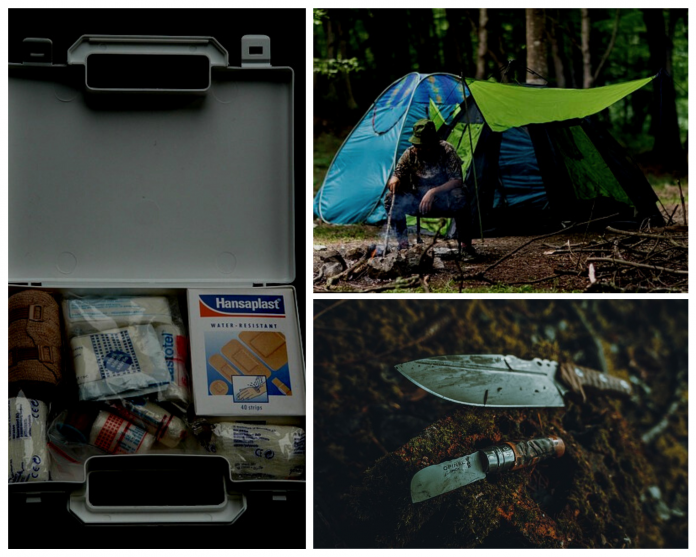Even if you know how to survive in the wild for a long time, it’s not easy to go into the wild and stay there. But in some situations, you need to grab your “Bug Out Bag” and go into the woods.
The only things we can use to save ourselves are the ones in this backpack. Only those who are ready and have everything they need are ready for the great outdoors.
Take some time every day to learn what you need to know to survive in the wild and pack a “Bug Out Bag” with things that will make long-term survival in the wild easier.
Fixed Blade Knife
If you could only bring one thing into a survival situation, a good fixed-blade knife would be the best choice. Having a knife makes it much easier to make tools, protect yourself, and hunt. When looking for a survival knife, you should try to find one that is of good quality and can take a beating.
Don’t skimp on knife quality because being trapped in the wilderness with a broken knife reduces morale and makes surviving far more challenging.
Metal Water Canteen And Bleach
Clean water is the first thing anyone who needs to survive needs to think about. Taking a metal water bottle that is sealed and filled with drinkable water will be enough for the first day or two. The canteen can be refilled with drinkable water indefinitely.
While not the most delicious option, sterilizing drinking water with a couple of drops of bleach when on the go is enough to kill off water-borne pathogens.
Metal Pot For Cooking
Bring a sturdy metal pot to heat up and sterilize the water.
In addition, a metal pot can be used to cook food.
Quality is the most important thing, so look for a heavy-duty metal pot that can endure fire for a long time.
Matches, Lighter, Flint, and Fire Starters
Most people who can’t start a fire the way their ancestors did need a way to make fire and fire starters.
The most important things to have are waterproof matches, a lighter, flint, and something like cotton balls covered in Vaseline that can keep a fire going until the wood starts to burn.
Fire is the best way to protect yourself from wild animals and is needed to cook food.
Canned Food, Fishing Equipment, Seeds, A Gun, and Ammo
Bringing a couple of cans of prepared food will provide enough calories to survive a few days, but anyone in a long-term survival situation will have to hunt and trap animals to survive.
Get as much information as you can about how to trap animals, as this is a great, passive way to get food.
Bring a fishing line and hooks, too, because fish are a great source of food when you’re out in the wild. Bring seeds that can be used to start a farm, as this will greatly expand options.
If you can, bring a gun and enough ammunition to make it easy to hunt big game, which will give you enough food to stay alive.
Tarp
In a survival situation, a large, waterproof tarp is very helpful because it can protect you from the elements and collect rainwater.
Tarps can be an important part of a shelter for survival or can be set up quickly when needed.
In the wild, staying dry is very important, so having a tarp on hand could mean the difference between life and death.
Portable Axe/Shovel, Multi-tool, and Paracord
A portable axe or shovel, a multi-tool, and some paracord are all important for long-term survival.
While a survival shelter can be built with little to no tools, bringing a portable axe or shovel will make it easier to set up the foundation and modify building materials.
Bring a multi-tool as well, since it is always useful and doesn’t take up much room in a backpack. In a survival situation, a paracord is very useful because it can be used for so many things, like tying up a tarp, setting up animal traps, getting up steep hills, and building a survival shelter.
Products for personal hygiene
Bring a small bag of personal hygiene items, because it’s still important to brush your teeth and take regular baths for your health.
Even if you can’t take a bath every day, it’s important to wash up once a week or even twice a month. Bring a roll of toilet paper, which will at least make you feel better in the short term.
First Aid Kit
You should never forget to bring a small first aid kit because you are more likely to get hurt when you are exploring new terrain and living in the wild.
Since survivalists will have to be their own doctors, they should bring basic antiseptics, antibacterial cream, gauze to bandage wounds, an elastic bandage to provide compression, and a needle and string to stitch up deep cuts.



